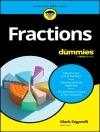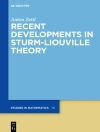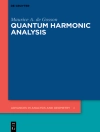This book gathers state-of-the-art research in computational engineering and bioengineering to facilitate knowledge exchange between various scientific communities. Computational engineering (CE) is a relatively new discipline that addresses the development and application of computational models and simulations often coupled with high-performance computing to solve complex physical problems arising in engineering analysis and design in the context of natural phenomena. Bioengineering (BE) is an important aspect of computational biology, which aims to develop and use efficient algorithms, data structures, and visualization and communication tools to model biological systems. Today, engineering approaches are essential for biologists, enabling them to analyse complex physiological processes, as well as for the pharmaceutical industry to support drug discovery and development programmes.
Table of Content
Chapter 1: Sequential Pattern Mining for U.S. presidential elections using Google Cloud Platform (GCP).- Chapter 2: An evolutionary optimization methodology for analysing breast canr gene sequens using MSAPSO and MSADE.- Chapter 3: Performing Image Compression and Decompression Using Matrix Substitution Technique.- Chapter 4: Classification of Cotton Crop Pests using Big Data Analytics.- Chapter 5: Effect Of Formulation Variables on Optimization of Gastroretentive in Situ Rafts of Bosentan Monohydrate HCL by 32 Factorial Design.- Chapter 6: Performan Analysis of Apache Spark ML lib Clustering on Batch Data Stored in Cassandra.- Chapter 7: A study on Opinion of B.Sc Nursing studentson Health Informatics and EMR to included in Nursing Education.- Chapter 8: A Comprehensive Hybrid Ensemble Method with Feature Selection Techniques.- Chapter 9: DNA based Quick Response (QR) code for Screening of Potential Parents for Evolving new Silkworm Ras ofhigh Productivity.- Chapter 10: Big Data Analysis for Land Use Classification Using Machine Learning Algorithms.












